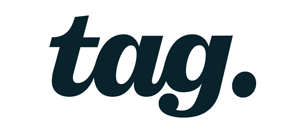BLOG July 14 2021
Transcreation, translation and localization should be a key area of focus for any global brand marketer. The world we live in is increasingly globalized, and as a result, consumers are developing increased expectations of the brands they interact with when it comes to understanding their local markets.
With more brands turning to digital channels to market their businesses, the localization process becomes even more important. Consumers across the globe interact on and in a huge variety of digital channels, platforms and languages, with English language speakers only accounting for 26% of internet users (Statista).
It’s clear that significant opportunities exist for brands who can effectively localize their content. However, many global marketers struggle to convey the essence of their brand across regions, while local marketing teams often find themselves trying to build local assets from scratch. An effective brand toolkit can help marketers keep control over their global branding while providing local marketing teams the right tools to create impactful local content. Here are our top tips for creating effective global toolkits:
1. Create with your team in mind
When asked to talk about their global brand image, many marketers turn to high-level vision and mission statements. Yet it can be difficult for local marketing teams to transform this into a tangible message that resonates deeply with consumers in their local market.
Effective brand toolkits should clearly and concisely distil your brand so that your ethos can be easily understood – and replicated – by employees across functions and around the globe. By keeping your toolkits free of colloquialisms and stripping away hyperbole, you will be left with a document that should resonate in every market you seek to enter.
2. Reduce duplication and boost efficiencies
Marketers around the globe tend to face the common challenge of being tasked to do more with less. By providing your global marketing teams a singular fit-for-purpose brand toolkit, you can help your employees reduce time spent tweaking existing documents and instead allow them to focus on tasks that will benefit your core business.
By speaking to your teams across the globe and auditing your current marketing collateral, you will be able to get a sense of what works – and what doesn’t. Creating a centralized hub of the most-used assets, imagery and messaging can allow your employees to simply ‘lift and shift’, reducing duplication of work and minimizing room for error or misalignment across regions.
3. Budget for the localization process
Throughout the pandemic, marketing budgets have been squeezed across virtually every sector. Marketers are increasingly under scrutiny to prove return on investment across every campaign, spending more on measurable marketing channels and reducing the focus on ‘brand-building’ and overheads.
Regardless, effective localization should be an integral aspect for any global brand, and it should therefore have a clear place in your marketing budget. Investing in your localization processes – whether that’s budgeting for building your brand toolkits or for campaign-specific transcreation and translation – should boost your in-market impact and help to build long-term brand equity.
4. Address each and every brand touchpoint
Your brand toolkits should not tell half the story. Marketers must ensure toolkits cover any and every branding element required, including logos, tagline devices, colour palettes, typefaces, tone of voice, imagery and templates, so your employees are equipped with the knowledge to produce collateral of any type, rather than having to create these from scratch.
Ease of access is paramount, too. Ensuring files are saved in the most usable format and are readily available across markets is a simple but often overlooked step of the process. Making use of a Digital Asset Management tool can help ensure all content is easily searchable, downloadable and transferrable across markets.
5. Research your brand impact across markets
To improve your localization and transcreation process, understanding how your brand is currently perceived in local markets is crucial. Enlisting an agency or research partner to help audit your brand assets and understand the impact of your messaging will allow you to identify any areas for concern – and therefore, where your focus should be directed.
Brands who ignore local market nuances and cultures may quickly find themselves on the end of a costly PR disaster. By researching your audience and understanding how your messaging translates, you’ll be able to avoid any potential issues while growing your brand equity and affinity in market.
At Tag, we work with brand marketers to ensure marketing messages resonate around the world. With our global team of translators, transcreators and cultural consultants, we help our clients reach multiple markets at scale, across regions and cultures. As trusted guardians of your brand, we protect your identity and integrity throughout the marketing mix.
Schedule a call today to discuss how we can support your brand with translation, transcreation or cultural consultation.
YOU MIGHT ALSO LIKE…
Food Photography Tips & Tricks for Brands: Capturing Cravings and Conversions

Happy Halloween from THP a Tag Company!

20 Tips for Successful Holiday Content Marketing



Comments are closed.